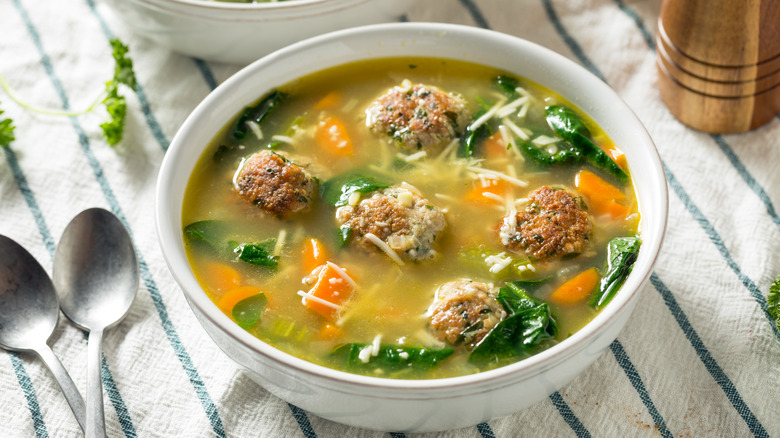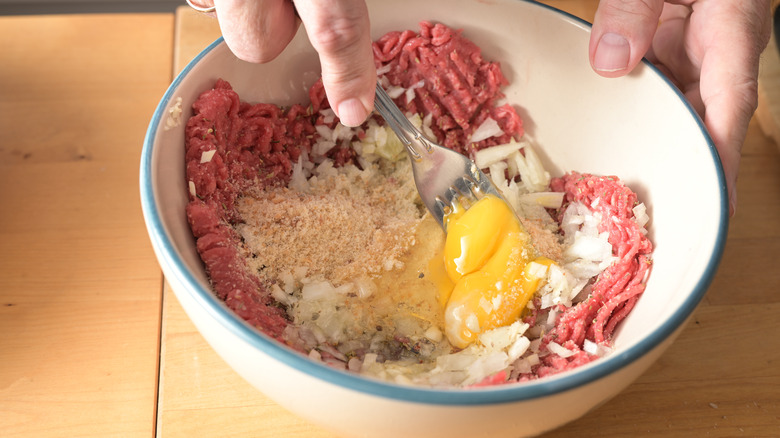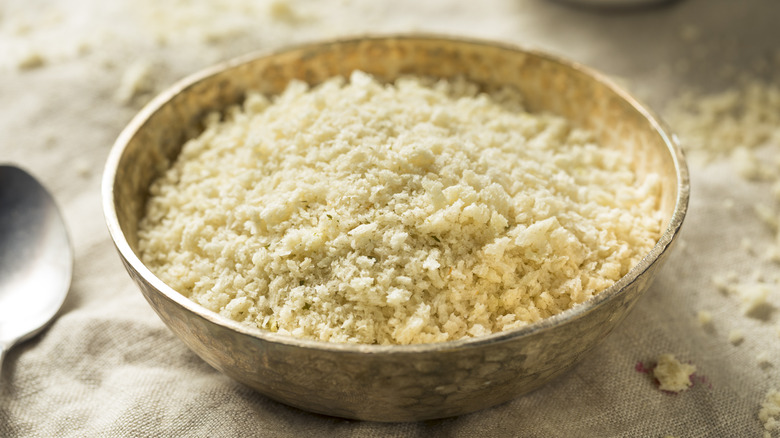Why You Should Choose A Leaner Meat When Making Meatball Soup
Meatballs come in many shapes and sizes. According to urban legend, there once was a meatball so big it rolled off its plate of spaghetti and right out the door, tumbling into a garden and under a bush, at which point it became a pile of mush. When it comes to soup, however, meatballs are typically kept small and compact, lest they distract from the other ingredients sharing their broth or like their unfortunate ancestor, lose their shape entirely.
While big, saucy meatballs are best when ultra-tender and delicate, soup meatballs need a bit of reinforcement before they're placed into a simmering pot. To prevent them from turning to mush, it helps to mind your meat-to-fat ratio by choosing leaner ground meat, which holds its form better than versions that are heavy in fat. If you're worried about a rubbery texture, rest assured that the broth itself will help keep your mini meatballs plenty juicy and delicious.
What we mean by lean
According to the USDA, ground beef is considered lean when it contains 10 or fewer grams of fat, 4.5 or fewer grams of saturated fat, and 95 milligrams or less of cholesterol. Of course, those numbers aren't listed as such on ground meat packages at the supermarket. Instead, leanness is shown in the form of a percentage, which represents the meat-fat ratio we mentioned earlier. Generally, ground meat labeled as 80 percent/20 percent is a safe bet. A 90 percent/10 percent split provides even more insurance against meatball breakage.
Another advantage of using lean ground meat for your meatball soup — whether it's beef, turkey, or pork — has to do with shrinkage. While fattier meatballs will shrink in size as they render much of their fat during the cooking process, lean meat doesn't have as much to lose, helping it retain its original size. This is especially beneficial when making soup, as it prevents a layer of fat from forming at the top.
Don't skip the breadcrumbs
Once you have your lean ground meat ready to go, making meatballs for soup — at least for Italian Wedding soup and similar recipes — is just like making any other standard Italian-style meatball. Depending on the recipe, you might add garlic, parsley, parmesan, salt and pepper, an egg, and breadcrumbs to the mix.
The latter two ingredients are absolutely essential for cohesive, juicy meatballs. While the egg helps bind the ingredients together, the breadcrumbs add body and texture. What's more, they help lock in moisture by soaking up all that good meatball juice. Without them as a moisture barrier, that juice would escape into the soup. Forgetting to add breadcrumbs wouldn't be the end of the world, but your lean meatballs would run a higher risk of becoming tough. You can use any brand you like, but you can never go wrong with the magic of panko.


